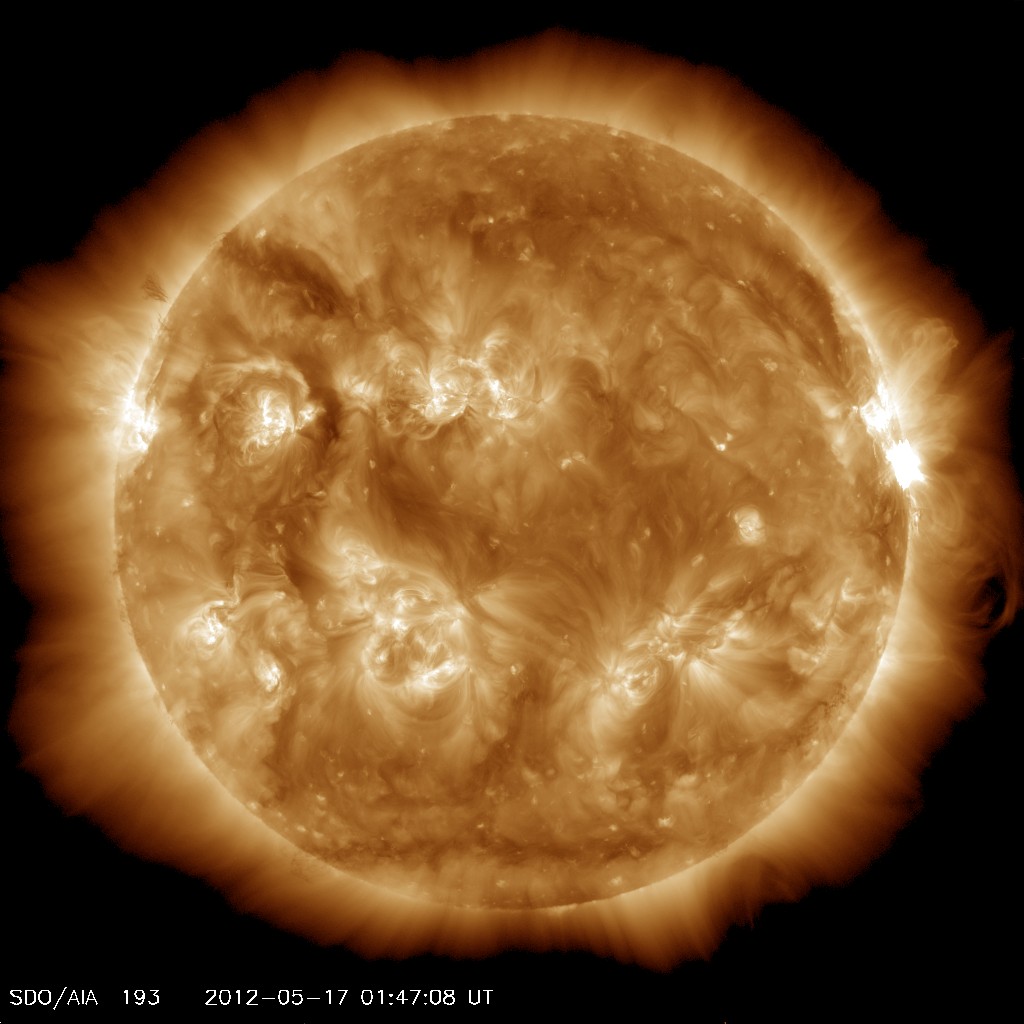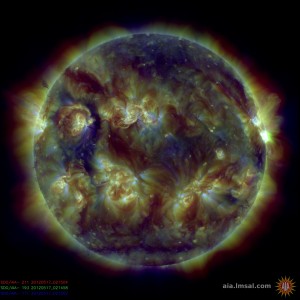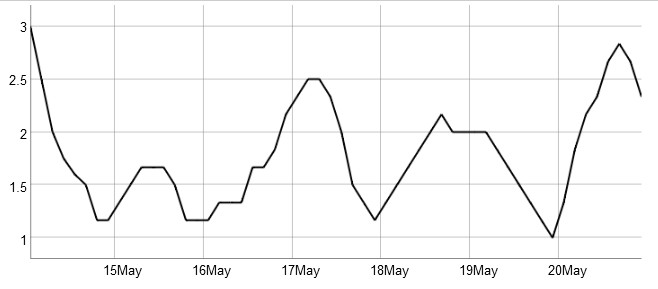Space weather highlights for May 14 – May 20, 2012: 13 C-class and one M-class flare

Solar activity ranged from very low to moderate levels. Region 1476 (N09, L=180, class/area Fkc/1050 on 09 May) continued to be the major contributor of x-ray flare activity throughout the week. It produced 13 C-class flares and an M-flare.
 Region 1476 began the week as an Fko type group with a beta-gamma configuration. As it rotated off the west limb on 17 May, the region produced an M5/1f flare on May 17th at 01:47 UTC. This event was accompanied by a 22 minute 10cm Radio Burst (600 sfu) at 17/01:42 UTC, Type II (645 km/s) and Type IV radio sweeps, and a partial halo CME. The CME was first observed by the SOHO/LASCO C3 spacecraft beginning at 17/02:06 UTC with an estimated plane-of-sky speed of approximately 1200 km/s. The majority of the ejecta was directed off the west limb. Region 1476 continued to produce C-class flares as it rotated off the visible disk on 18 May. A filament eruption produced a CME that was observed in STEREO A COR 2 imagery (plane-of-sky speed approximately 482 km/s) beginning at 18/07:09 UTC on 18 May. The ejecta was slightly north of the ecliptic plane, however a glancing blow is possible from that event.
Region 1476 began the week as an Fko type group with a beta-gamma configuration. As it rotated off the west limb on 17 May, the region produced an M5/1f flare on May 17th at 01:47 UTC. This event was accompanied by a 22 minute 10cm Radio Burst (600 sfu) at 17/01:42 UTC, Type II (645 km/s) and Type IV radio sweeps, and a partial halo CME. The CME was first observed by the SOHO/LASCO C3 spacecraft beginning at 17/02:06 UTC with an estimated plane-of-sky speed of approximately 1200 km/s. The majority of the ejecta was directed off the west limb. Region 1476 continued to produce C-class flares as it rotated off the visible disk on 18 May. A filament eruption produced a CME that was observed in STEREO A COR 2 imagery (plane-of-sky speed approximately 482 km/s) beginning at 18/07:09 UTC on 18 May. The ejecta was slightly north of the ecliptic plane, however a glancing blow is possible from that event.
A greater than 10 MeV and greater than 100 MeV proton event at geosynchronous orbit was observed associated with the May 17th M5 flare. The greater than 10 MeV proton event began at 17/02:10 UTC and reached a peak flux of 255 pfu at 17/04:30 UTC, ended at 18/16:20UTC. The greater than 10 MeV proton event crossed the 100 pfu threshold (S2) at 17/02:45 UTC and fell below 100 pfu at 17/09:45 UTC. The greater than 100 MeV proton event began at 17/02:00 UTC and reached a maximum of 20 pfu at 17/02:30 UTC, ended at 17/17:25 UTC.
The greater than 2 MeV electron flux at geosynchronous orbit was at moderate to high levels from 14 through 16 May. Moderate levels were observed from 17 through 20 May.
Geomagnetic field activity ranged from quiet to active levels. Quiet levels were observed on 15, 17, and 19 May. Quiet to unsettled levels were observed on 14 and 18 May. Quiet to unsettled levels with isolated active periods were observed on 16 and 20 May. On 16 May, an extended period of the southward Bz component of the interplanetary magnetic field caused an isolated active level during the 16/21:00 – 24:00 UTC period.

At approximately 20/01:36 UTC, the ACE satellite observed an interplanetary shock passage with a corresponding weak sudden impulse observed in the Boulder magnetometer (15 nT) at 20/02:15 UTC. The shock passage was likely associated with the 17 May CME. The geomagnetic field responded with an isolated active period during the 20/03:00 – 06:00 UTC period.
Source: swpc.noaa.gov
Featured image: SDO AIA 193 May 17, 2012 at 01:47 UTC – M5.1

Commenting rules and guidelines
We value the thoughts and opinions of our readers and welcome healthy discussions on our website. In order to maintain a respectful and positive community, we ask that all commenters follow these rules:
We reserve the right to remove any comments that violate these rules. By commenting on our website, you agree to abide by these guidelines. Thank you for helping to create a positive and welcoming environment for all.